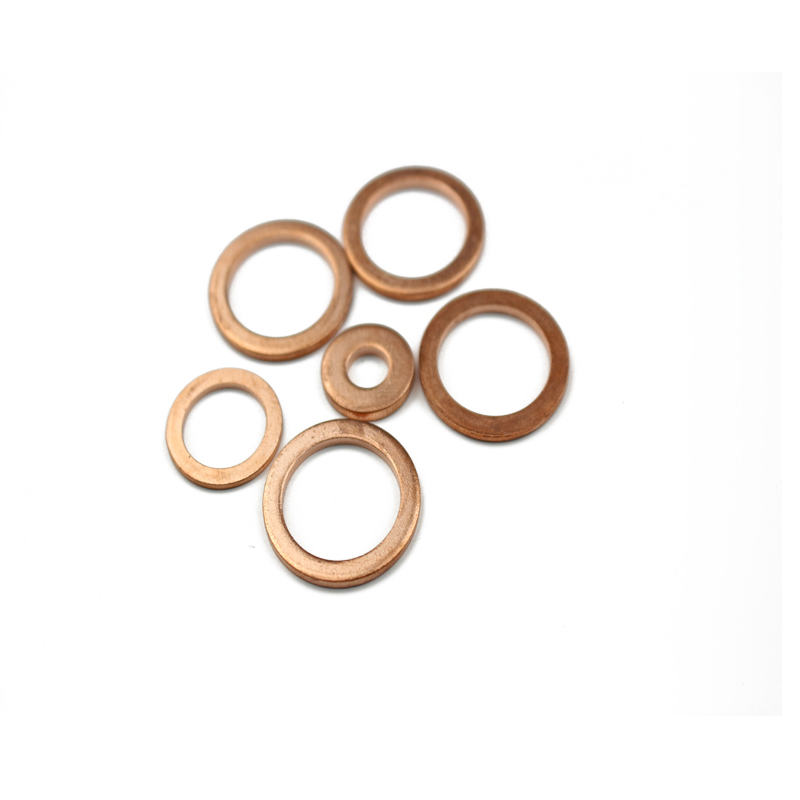Understanding the Mechanisms and Benefits of Axial Face Seals in Engineering Applications
Understanding Axial Face Seals Functionality and Applications
In the realm of mechanical engineering, seals play a crucial role in ensuring the operational efficiency and longevity of various machinery and equipment. Among the numerous types of seals available, axial face seals have garnered significant attention due to their unique design and functionality. In this article, we will explore the principles behind axial face seals, their construction, working mechanisms, and various applications across different industries.
What is an Axial Face Seal?
An axial face seal, often referred to as a flat face seal, is designed to prevent the leakage of fluids or gases between two surfaces that are in close proximity. Unlike traditional seals that function primarily through radial compression, axial face seals operate by providing a sealing interface on flat surfaces. This type of seal is characterized by its ability to withstand various operating conditions and is particularly effective in high-speed applications.
Construction of Axial Face Seals
The construction of an axial face seal typically involves two flat sealing surfaces, one stationary and the other rotating. These surfaces are often constructed from materials that can withstand high pressure, temperature fluctuations, and corrosive environments. Common materials used include elastomers, plastics, and metals, with the choice depending on the specific application requirements.
To enhance sealing performance, axial face seals may also include additional components such as springs, which provide necessary pressure to maintain contact between the sealing surfaces. This ensures that the seal performs optimally even under varying operational conditions, such as temperature changes and vibrations.
Working Mechanism
The essential operation of axial face seals relies on the principle of hydraulic pressure. When the two sealing faces come into contact, they create a barrier that prevents fluid or gas from leaking. The design allows for a minimal gap between the surfaces, which helps to maintain a consistent sealing ability.
In applications where axial face seals are used, the dynamic motion of rotating machinery generates centrifugal forces that help keep the seal tightly pressed against the rotating component. This design not only minimizes wear and tear but also extends the lifespan of the seal, making it a reliable choice for many industrial applications.
Advantages of Axial Face Seals
axial face seal

Axial face seals offer several advantages over traditional sealing methods. The most notable benefits include
1. Reduced Leakage The flat sealing surfaces provide an excellent barrier against leakage, making them highly effective in environments where fluid or gas containment is critical.
2. High-Speed Application Capability Axial face seals are well-suited for high-speed rotating applications due to their design, which minimizes the risk of failure under extreme conditions.
3. Versatility These seals can be adapted to a wide range of machinery, including pumps, compressors, and motors, across various industries.
4. Robust Performance With materials selected for durability, axial face seals can withstand harsh operational environments, including exposure to chemicals and extreme temperatures.
5. Easy Installation and Maintenance Compared to other sealing solutions, axial face seals are often easier to install and maintain, reducing downtime and costs for manufacturers.
Applications in Industry
Axial face seals are utilized in numerous industrial applications, including but not limited to
- Automotive Industry Used in engines, transmissions, and axles to prevent fluid leakages. - Aerospace Employed in hydraulic systems and fuel systems where sealing integrity is crucial for safety and efficiency. - Pumping Systems Common in water, oil, and chemical pumps to minimize leakage and protect both the environment and the pump’s operational integrity. - Manufacturing Machinery Essential in CNC machines and lathes to ensure smooth operation by preventing contamination of lubricants.
Conclusion
In summary, axial face seals play an indispensable role in ensuring the efficiency and reliability of various industrial applications. With their unique design, robust performance, and ability to minimize leakage, these seals have become a preferred choice for engineers and manufacturers alike. As technology continues to advance, the development of new materials and designs for axial face seals can be expected, further enhancing their performance and expanding their application across different sectors. Proper understanding and implementation of axial face seals can lead to significant improvements in operational efficiency and cost-effectiveness in machinery and equipment.
-
Understanding the Front Main Engine Seal: Purpose, Maintenance, and Installation
News Jul.29,2025
-
Understanding O-Rings and Seal Rings: Types, Applications, and Custom Solutions
News Jul.29,2025
-
Understanding Crankshaft Oil Seals: Rear Seals, Pulley Seals, and Their Role in Engine Integrity
News Jul.29,2025
-
The Importance of Front and Rear Crankshaft Seals in Engine Performance and Oil Management
News Jul.29,2025
-
Crank Oil Seals: Functions, Types, and Cost Considerations in Engine Maintenance
News Jul.29,2025
-
A Comprehensive Guide to O-Rings and Seals: Types, Materials, and Global Applications
News Jul.29,2025
-
Mastering Diesel and Performance Engine Maintenance: A Guide to Critical Oil Gaskets
News Jul.28,2025
Products categories















